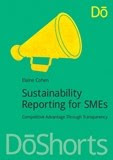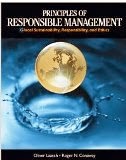Back again with my sector series based on the new CR Sector Reviews from CorporateRegister.com . Previous posts in this series include the Forestry and Paper Sector and the Automotive Sector. The CR Sector Overview series covers 11 sectors so far and they are free to subscribing members of CorporateRegister.com but I have kindly been provided with a full set, so that I can share some of my own insights about each one with the CSR Reporting Blog readers.
Some context about the mining industry from the CorporateRegister.com CR Mining Sector Review: The mining sector extracts valuable minerals from the earth. Among the most common products of the mining industry are coal, gold, bauxite, copper, salt, iron ore, zinc, diamonds, lead, silver, clay, and limestone. Extraction of these raw materials takes place either through surface mining or underground mining, although the former is nowadays far more commonplace than the latter. Surface mining, including quarrying, generally consists of stripping away layers of topsoil and bedrock to reach ore deposits, while underground mining is classified according to the type of access tunnels used – shaft mining for vertical shafts, drift mining for horizontal tunnels, or slope mining for operations with diagonally sloping access shafts.
The mining sector can be a highly profitable business: the top 40 largest companies had revenues of more than $700 billion in 2011, on which they made combined profits of $133 billion, according to PWC. Total assets of the top 40 amount to more than $1 trillion. The International Labor Organization estimated that in 2010, 1.5 million people were employed in the sector in developed nations, and 2.2 million in developing and emerging nations.
The review lists six top material issues for this sector, with five more issues high on the radar. Among these top 11 issues are, as you might expect, are health and safety, remediation, and general environmental impacts. One of the most well-known bodies that drives ethical behavior in this sector is the Extractive Industries Transparency Initiative which publishes the global transparency standard for improving governance of natural resources.
As usual, I'll take a look at the top five reports from this sector, which has tended to be one of the leading reporting sectors in all industry, ranking in the top ten of all sectors.
The top five miners all published GRI A+ level reports in 2013 with 542 pages of scintillating content. Benefit of the doubt, please. Although, Glencore Xstrata was a runner up in the 2014 Public Eye awards, which give recognition for irresponsibility and unsustainability, and Vale won a Public Eye ward in 2012. Rio Tinto won Greenwash Gold's award in 2014, BHP Billiton has a website devoted to monitoring its activities by stakeholders who are concerned about its impacts. South African miners who developed tuberculosis working in gold mines recently won a landmark payout from Anglo American. If any sector needs sustainability reporting, it's this one.
As I look at these top five reports, I will consider the way each company has reported the key sustainability material issues:
As I look at these top five reports, I will consider the way each company has reported the key sustainability material issues:
- Health and Safety
- Remediation
- Environmental Impacts
BHP Billiton was one of the early users of the GRI Framework, having published a first environmental report back in 2001. The current 2013 Sustainability Report is a GRI A+ 59 pager.
What's good about this is that the page in which each issue is covered is indicated, so that you can link focus areas with the report narrative. What's less good is that there is no prioritization so we are left guessing as to what is considered MOST material by BHP Billiton and its stakeholders.
Health and Safety: With 128,000 employees and contractors, health and safety is an area of significant impact for this company. BHP Billiton covers this in two separate sections: workplace safety, and health and wellbeing, the latter being about controlling occupational exposures at their source and providing a healthy work environment. Health risks faced by BHP Billiton employees "include fatigue and occupational
exposure to noise, silica, manganese, diesel exhaust particulate, fluorides, coal tar pitch, nickel and sulphuric acid mist". In FY2013, the incidence of occupational illness was 47.9 cases per 10,000 employees, and this includes in increase in muscoskeletal diseases which may be caused or exacerbated by single or recurring incidents of "manual handling, heavy physical work, fixed work postures, sedentary work, frequent bending and twisting, lifting and forceful movements, repetitive work and vibration." Safety record has been improving over the past few years, but in FY2013, BHP Billiton records a total recordable incidence frequency of 4.6 per million hours worked, and three work-related fatalities. An interesting aspect of employee safety is aviation risk. BHP Billiton moves over 450,000 people each year by chartered aircraft so this is quite a significant. BHP's reporting in this area is mainly about addressing risk, rather than understanding opportunity. However, in Chile, you can take a moment out of your day to undertake "gentle stretching exercises". Maybe I should try that myself.
 |
| gently stretching on the clock at BHP Billiton Chile |
Remediation: Called rehabilitation by BHP Billiton, this report goes into no detail about what this company does to remediate areas which the company has exited. There is a general statement: "The rehabilitation of land no longer required for our activities
continues to be a central part of our approach to managing our
effects on land. We are required to rehabilitate disturbed areas
consistent with the pre-disturbance land use or alternative land
uses developed in consultation with stakeholders." What has been done in FY2013 is not clear, despite performance data showing over 43,000 rehabilitated hectares in FY2013.
Environmental Impacts: BHP Billiton focuses on climate change and energy, biodiversity and land impacts and water management. Environmental performance data is summarized on two additional pages at the end of the report and covers only this year and prior year. Given this company's long reporting history, we might have expected to see some trend data over a longer period of time. Emissions are higher in FY2013 than every year since 2010, but this doesn't prevent the CEO from claiming "In FY2013, our GHG emissions were lower than the FY2006 baseline, which keeps us in line to achieve our target of maintaining our future FY2017 greenhouse gas emissions below FY2006 levels." Some form of intensity measure linking emissions to output would be helpful in understanding whether BHP Billiton is actually making progress or otherwise. Also, BHP Billiton devotes a page to explaining all about fracking (hydraulic fracturing) which has been the subject of quite some controversy. While the depth of the protests against fracking appears rather understated (see a Telegraph article from August 2013), BHP has done the right thing by disclosing its approach and policy in this respect.
Vale SA of Brazil, the worlds largest iron ore producer, produced a mammoth 218 page GRI A+ Sustainability Report for 2012, with a super-navigable hyper-linked PDF which is a pleasure to work through. Vale's reporting style is direct, if not a little technical, and data is presented clearly.
Material issues are clearly laid out by Vale, although the two most material issues - communities and people - are very broad and could cover a host of related issues under these generic headlines. None of the Vale material issues are particularly sector specific.
Health and Safety: Of the 195,000 people employed by Vale, an injury rate of 2.8 per million hours worked is recorded, as well as the fact that 15 families suffered tragedy through employees who lost their lives at work in 2012. Injury rates decreased in 2012 versus prior years, and in 2012, safety became an explicit element of employees' performance reviews. Prior year data of fatalities is not provided so I checked back to the 2012 report and there were 15 fatalities in that year too, and 11 in 2010. Seems that Vale has a long way to go to achieve its zero harm target.
Environmental Impacts: BHP Billiton focuses on climate change and energy, biodiversity and land impacts and water management. Environmental performance data is summarized on two additional pages at the end of the report and covers only this year and prior year. Given this company's long reporting history, we might have expected to see some trend data over a longer period of time. Emissions are higher in FY2013 than every year since 2010, but this doesn't prevent the CEO from claiming "In FY2013, our GHG emissions were lower than the FY2006 baseline, which keeps us in line to achieve our target of maintaining our future FY2017 greenhouse gas emissions below FY2006 levels." Some form of intensity measure linking emissions to output would be helpful in understanding whether BHP Billiton is actually making progress or otherwise. Also, BHP Billiton devotes a page to explaining all about fracking (hydraulic fracturing) which has been the subject of quite some controversy. While the depth of the protests against fracking appears rather understated (see a Telegraph article from August 2013), BHP has done the right thing by disclosing its approach and policy in this respect.
Vale SA of Brazil, the worlds largest iron ore producer, produced a mammoth 218 page GRI A+ Sustainability Report for 2012, with a super-navigable hyper-linked PDF which is a pleasure to work through. Vale's reporting style is direct, if not a little technical, and data is presented clearly.
Material issues are clearly laid out by Vale, although the two most material issues - communities and people - are very broad and could cover a host of related issues under these generic headlines. None of the Vale material issues are particularly sector specific.
Health and Safety: Of the 195,000 people employed by Vale, an injury rate of 2.8 per million hours worked is recorded, as well as the fact that 15 families suffered tragedy through employees who lost their lives at work in 2012. Injury rates decreased in 2012 versus prior years, and in 2012, safety became an explicit element of employees' performance reviews. Prior year data of fatalities is not provided so I checked back to the 2012 report and there were 15 fatalities in that year too, and 11 in 2010. Seems that Vale has a long way to go to achieve its zero harm target.
Remediation: This topic doesn't appear specifically in Vale's report, through a lot of narrative is devoted to biodiversity and land use, and the work Vale is doing to restore forests, and protecting speleological heritage. Gotcha. Speleogy is the study of caves. I learn something new every time I read a Sustainability Report. Vale has been doing some interesting speleology stuff. Vale has a program of closure plans to identify and plan to address social, environmental and geotechnical impacts.
Environmental impacts: Vale's environmental impacts focus on land-use, climate change and energy, water and waste. In 2012, Vale generated one million tons of waste of which 97% was hazardous - 70% more hazardous waste than in 2011 - of which just over half goes to landfill and the rest is reprocessed or treated. Although Vale refers to plans to reduce generation of hazardous waste, results are trending in the opposite direction. In terms of GHG emissions, Vale has a target to reduce GHG emissions by 5% by 2020 (not sure what the baseline year is), and while Scope 1 and 2 emissions are lower than the 2010 level, they increased in 2012 versus 2011. Lack of intensity measures means that it is difficult to assess the underlying carbon management performance of Vale.
RioTinto's Sustainable Development Report for 2012 is online and the PDF download is a website copy of 93 pages.
Material issues are shown in the following chart with 13 issues highlighted as most material. Material issues are stated in generic headline terms, with no sector specific orientation. Rio Tinto has a set of strategic goals and specific, measurable targets, which more or less align with these material priorities.
Health and Safety: Rio Tinto devotes much space to reporting on health and safety and record an accident injury rate of 0.67 per 200,000 hours worked. If my math is correct, this equates to a rate of 3.35 per million hours worked, a measure more frequently used. Fatality levels have decreased over the years to two in 2012, and data is shown since 2003 in interactive charts (for all key performance data) which is a benefit of the online presentation.
Remediation: Rehabilitation is dealt with in detail by Rio Tinto and more interactive charts show the level of rehabilitation of land by type (agriculture, forestry, recreation etc). Rio tinto also has an internally developed Land Use Stewardship Standard to govern its activities in this area.
Environmental impacts: Rio Tinto has been controlling energy consumption and emissions and includes intensity measures in its reporting so we can see that underlying performance is improving in most areas.
Anglo American's Sustainable Development Report for 2012 includes a list of material issues presented on a full page with links to more detailed narrative and performance. Five years of performance data is provided in a separate section in the report.
The seven issues highlighted are compliance, community, human rights, water, climate change and energy, employee health and safety and workforce management.
Health and Safety: Anglo American reports a lost time injury rate of 0.6 per 200,000 hours across its 85,763 employees. In 2012, 13 lives were lost in work related incidents (and an additional 5 in public transportation and criminal incidents). The good news is that fatality numbers have been reducing since 2008; the bad news is that in 2008, there were 27 fatalities, an outrageous number of people killed during the course of their work. Anglo American may be getting safer, but tell that to the 13 families that suffered tragic losses in 2012. Anglo American says "We do not accept that any employee or contractor should have to risk their life while working for us." Err, sorry, but they do accept it. Every year since 2008 between 27 and 13 individuals have not only risked their lives but lost them. Fatalities, as we have seen so far, appears to be a characteristic of the mining sector. I wonder what would happen if manager salaries (or even jobs) were linked to the number of fatalities? I don't see any company in the mining sector making that link explicitly. Anglo American also reports transparently on the tuberculosis incident rate - an occupational disease - and it surprised me to learn that 958 employees out of 100,000 had tuberculosis in 2012, including 667 new cases. Again, this is lower than in prior years, demonstrating progress in addressing this issue, but even so, it's rather a horrendous discovery. This is in addition to 170 new cases of other types of occupational disease.
Remediation: Anglo American also engages in rehabilitation efforts and has a toolkit for mine closure planning. Of the 98,561 hectares of land that have been disturbed by Anglo American's mining activities, 17,903 hectares have been rehabilitated. I am not quite sure why there is a big gap between what was disturbed and what was rehabilitated - this is not explained. In fact, the entire issue of rehabilitation is rather skimpily covered by Anglo American, IMHO.
Environmental impacts: Anglo American provides 3 year data, showing increases in energy and water consumption but slightly decreased in GHG emissions. Water is highlighted by Anglo American as one of the most material business risks, with more than 70% of the company's mines in water stressed areas. 60 projects for water saving were implemented in 2012, and Anglo declares a strategy to be water neutral at new mines by 2030. The Water Efficiency Target Tool is appropriately acronymed WETT. Nonethelקss, total water consumption has been increasing, so Anglo American has some work still to do in this area.
Glencore Xstrata was formed in 2013 after a merger between Glencore and Xstrata, making it one one of the larger companies in this sector with over 150 mining and metallurgical sites and other facilities, employing over 190,000 people, with the products that get into pretty much almost anything you might find in your home or business or anywhere else you might be. The newly merged company generated revenues of $214 billion in 2012, turning it into the largest company in this sector.
Glencore Xstrata's material issues are generally similar to those we have seen in the other leading mining companies, though human rights and license to operate are explicitly noted, alongside safety, environment and compliance.
Health and Safety: Lost time accident rate in 2012 was 2.03 per million hours worked. Fatalities numbered 27 in 2012, bringing this company to the top of the leaderboard for killing people in the course of duty, not something I suspect the company will be proud of. The company opens up the safety chapter in the report with a section from its Code of Ethics:
Time to turn that belief into a reality. Glencore Xstrata includes several pages of detail about enhanced safety procedures and incident reporting. Hopefully, 2013's report will show some improvement.
Remediation: Rehabilitation is briefly covered in a couple of short paragraphs. With the size and scope of this company's operations, we might have expected to see greater detail on this topic.
Environmental impacts: Water, emissions and waste (including hazardous waste) are the key areas reported by Glencore Xstrata, and some case studies provide insight into specific initiatives to manage impacts. Emissions increased in 2012, but overall water withdrawn (excluding agricultural activities) reduced.
Overall, my review of the mining sector reports, very superficial though it is, has reinforced to me how complex these large business are and how many sustainability issues they must deal with, from the most basic, such as the safety of their employees, to the most specific, such local community grievances about anything from noise, to transportation to air quality and more. As a result, the sustainability reports tend to be rather dry and technical, with a lot of data, in general, presented clearly.
I suspect, though, not being an expert in the sector, that there is also quite a lot that I miss. That's why the CorporateRegister.com Sector Review was helpful - highlighting some of the core issues the sector faces, and helping us understand where we need to be vigilant. The fact that tens of people are dying every year in the service of the mining industry leading companies has to be unacceptable, not to mention the amount of suffering caused to employees and their families through work-injuries - I did a rough calculation for these five companies at an average 3.5 per million hours injury rate, and got a result of almost 5,000 people injured every year in these companies alone, some possibly very seriously injured. Surely it's time we worked out how to make work safer? Similarly, environmental impacts are varied and significant. Hazardous waste levels are a little scary, and in many cases, despite declarations of environmental love, impacts continue to get negativer and negativer.
The fact that the sector is one of the top ten reporting sectors enables us, at least, to be aware of these issues and ensure we keep this industry on its toes.
elaine cohen, CSR consultant, winning (CRRA'12) Sustainability Reporter, HR Professional, Ice Cream Addict. Author of Understanding G4: the Concise guide to Next Generation Sustainability Reporting AND Sustainability Reporting for SMEs: Competitive Advantage Through Transparency AND CSR for HR: A necessary partnership for advancing responsible business practices . Contact me at www.twitter.com/elainecohen or via my business website www.b-yond.biz (Beyond Business Ltd, an inspired CSR consulting and Sustainability Reporting firm)


































No comments:
Post a Comment